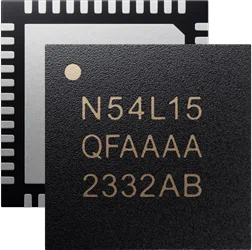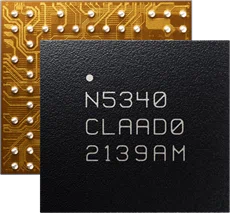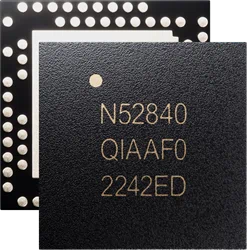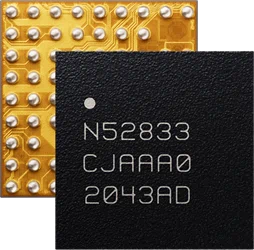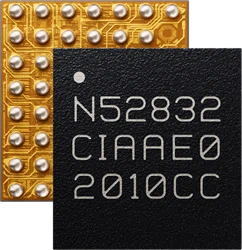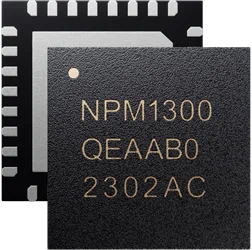nRF54L Series
nRF53 Series
nRF5340 SoC
Dual-core Bluetooth 5.4 SoC supporting Bluetooth Low Energy, Bluetooth mesh, NFC, Thread and Zigbee
128 MHz Arm Cortex-M33 CPU with
1 MB Flash + 512 KB RAM
64 MHz Arm Cortex-M33 CPU with
256 KB Flash + 64 KB RAM
Bluetooth Low Energy
Bluetooth Direction Finding
Bluetooth mesh
Thread, Zigbee
ANT
NFC
Advanced security
USB, QSPI, HS-SPI
105 °C extended operating temperature
1.7-5.5 V supply voltage range
nRF52 Series
Bluetooth Mesh SoCs comparison
| nRF5340 | nRF52840 |
nRF52833 | nRF52832 | |
|---|---|---|---|---|
| CPU | 128 MHz Arm Cortex-M33 + 64 MHz Arm Cortex-M33 |
64 MHz Arm Cortex-M4 with FPU | 64 MHz Arm Cortex-M4 with FPU | 64 MHz Arm Cortex-M4 with FPU |
| Flash | 1 MB + 256 KB |
1 MB | 512 KB | 512/256 KB |
| RAM | 512 KB + 64 KB |
256 KB | 128 KB | 64/32 KB |
| Arm TrustZone | Yes | Yes | ||
| Arm CryptoCell | 312 | 310 | ||
| Root-of-Trust | Yes | Yes | ||
| Secure key storage | Yes | |||
| High-Speed SPI | Yes | Yes | Yes | |
| TWI/SPI/UART | 4xTWI/SPI/UART +TWI/SPI/UART | 2xTWI/SPI, SPI, 2xUART | 2xTWI/SPI, SPI, 2xUART | 2xTWI/SPI, SPI, 2xUART |
| QSPI | Yes | Yes | ||
| USB | Yes | Yes | Yes | |
| PWM, PDM, I2S | Yes | Yes | Yes | Yes |
| ADC, Comparator | Yes | Yes | Yes | Yes |
| Operating temperature | -40 to 105 °C | -40 to 85 °C | -40 to 105 °C | -40 to 85 °C |
| Supply voltage range | 1.7 to 5.5 V | 1.7 to 5.5 V | 1.7 to 5.5 V | 1.7 to 3.6 V |
| Packages | 7x7 mm aQFN94 (48 GPIOs) 4.4x4.0 mm WLCSP95 (48 GPIOs) |
7x7 mm aQFN73 (48 GPIOs) 3.5x3.6 mm WLCSP94 (48 GPIOs) |
7x7 mm aQFN73 (42 GPIOs) 5x5 mm QFN40 (18 GPIOs) 3.2x3.2 mm WLCSP (42 GPIOs) |
6x6 mm QFN48 (32 GPIOs) 3.0x3.2 mm WLCSP50 (32 GPIOs) |
Compatible PMIC and RF FEM options
Concurrent Bluetooth Mesh and Bluetooth LE
All Bluetooth Mesh SoCs can run both Bluetooth Low Energy and Bluetooth Mesh concurrently. The radio time is time sliced and shared between the protocols. The scheduling is autonomous and connections are maintained. Leverage the interoperability of our Bluetooth LE stack and let a Bluetooth LE device, such as a smartphone, bridge into the Bluetooth Mesh network. The smartphone can then provision/commission in new nodes and interact with the mesh network.
.png)

